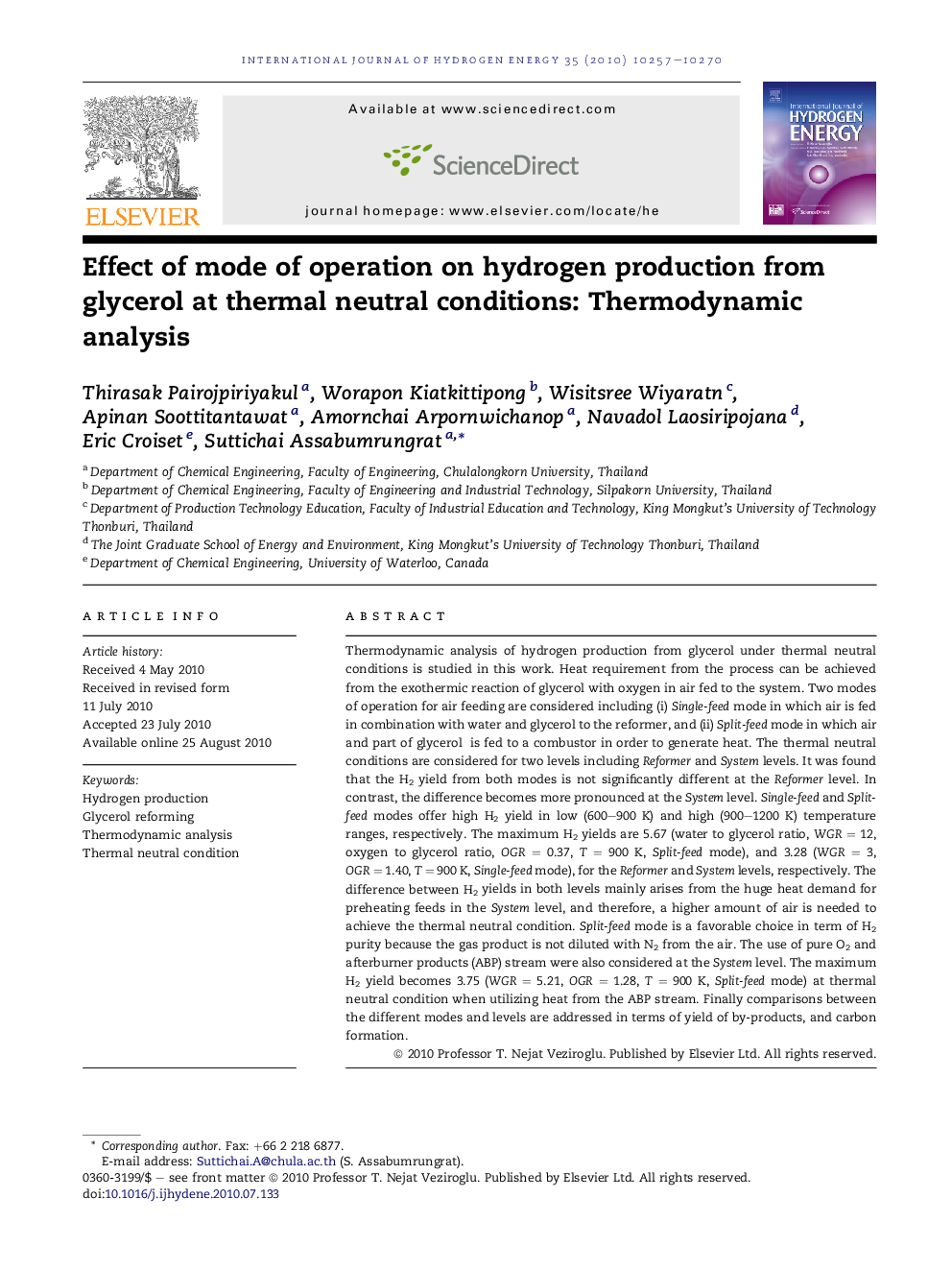| Article ID | Journal | Published Year | Pages | File Type |
|---|---|---|---|---|
| 1280080 | International Journal of Hydrogen Energy | 2010 | 14 Pages |
Thermodynamic analysis of hydrogen production from glycerol under thermal neutral conditions is studied in this work. Heat requirement from the process can be achieved from the exothermic reaction of glycerol with oxygen in air fed to the system. Two modes of operation for air feeding are considered including (i) Single-feed mode in which air is fed in combination with water and glycerol to the reformer, and (ii) Split-feed mode in which air and part of glycerol is fed to a combustor in order to generate heat. The thermal neutral conditions are considered for two levels including Reformer and System levels. It was found that the H2 yield from both modes is not significantly different at the Reformer level. In contrast, the difference becomes more pronounced at the System level. Single-feed and Split-feed modes offer high H2 yield in low (600–900 K) and high (900–1200 K) temperature ranges, respectively. The maximum H2 yields are 5.67 (water to glycerol ratio, WGR = 12, oxygen to glycerol ratio, OGR = 0.37, T = 900 K, Split-feed mode), and 3.28 (WGR = 3, OGR = 1.40, T = 900 K, Single-feed mode), for the Reformer and System levels, respectively. The difference between H2 yields in both levels mainly arises from the huge heat demand for preheating feeds in the System level, and therefore, a higher amount of air is needed to achieve the thermal neutral condition. Split-feed mode is a favorable choice in term of H2 purity because the gas product is not diluted with N2 from the air. The use of pure O2 and afterburner products (ABP) stream were also considered at the System level. The maximum H2 yield becomes 3.75 (WGR = 5.21, OGR = 1.28, T = 900 K, Split-feed mode) at thermal neutral condition when utilizing heat from the ABP stream. Finally comparisons between the different modes and levels are addressed in terms of yield of by-products, and carbon formation.
